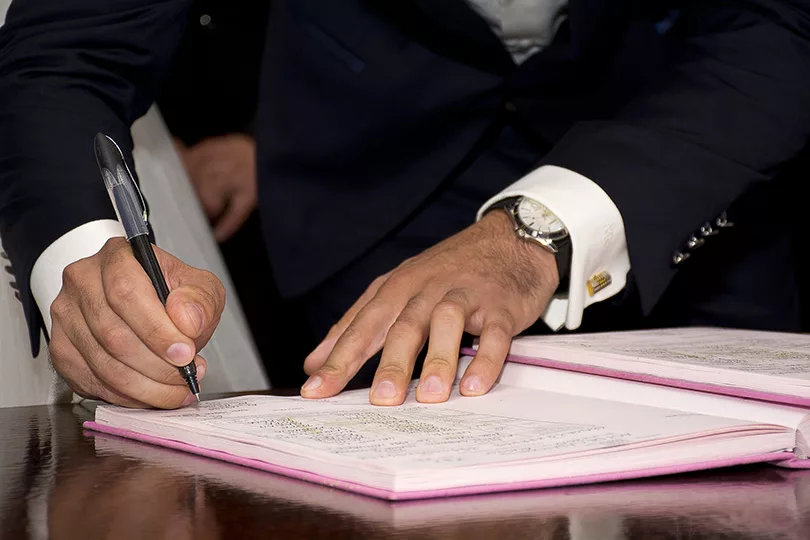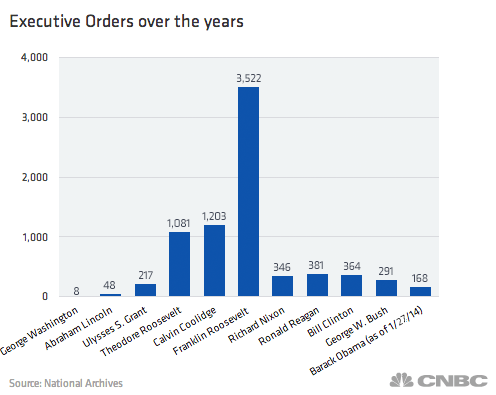
What is an Executive Order?
Basically, it’s an official statement from the president advising federal agencies on what to do and how to use resources.
Executive orders do not create laws, but they give specific instruction on how to operate under existing laws.
Executive orders can direct federal agencies to prioritize certain actions. For example, a president might issue an executive order establishing a federal priority and directing the Department of Homeland Security to use available funding to start a specific project.
What gives presidents this power?
There’s actually nothing in the Constitution that specifically gives a detailed outline of executive orders, but there is a “grant of executive power” in Article II, which has been cited to give presidents this authority.
Are executive orders common?
Every president to date has used executive orders, and more than 13,000 have been issued since 1789. They’ve been used in all different instances: to respond to natural disasters, states of emergency, war, economic crises, to promote civil rights… and sometimes to limit them.

What are some examples from the past?
History has looked both kindly and deeply unfavorably on executive orders throughout history. Examples include:
– The internment of Japanese-Americans during World War II by President Franklin Roosevelt
– Racial discrimination in federal housing and hiring was banned by President John Kennedy and President Lyndon Johnson
– Hundreds of thousands of undocumented immigrants who were brought to the United States as children had deportation orders halted by President Barack Obama
See all executive orders that have been signed since 1937 here.
What can we do if we support or oppose a particular order?
1. The most effective thing is to vote for candidates who are aligned with your values. The president has the power to issue executive orders, and only the courts can strike them down. Members of the Senate confirm Supreme Court nominees, so we must vote carefully in presidential and midterm elections in order to impact how executive orders come to be.
2. We also need to tell our Senators how we expect them to vote when Supreme Court candidates are being confirmed. Whether it’s by making calls to the Capitol, to district offices, emailing or even showing up in person, we must hold our elected officials accountable.
3. Lastly, we can join rallies in support or opposition to executive orders, write blog posts, or tell the stories of people who are affected by executive orders. Speaking truth to power is an important part of what it means to be American.
Published January 31, 2017. Updated February 25, 2025.
